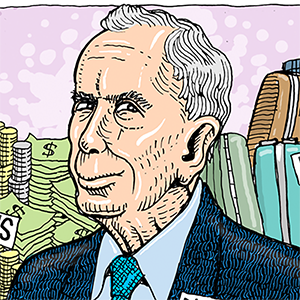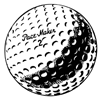Astronauts arrive at Kennedy Space Center as 1st crew for Boeing's Starliner spacecraft
Published in News & Features
“I just got a text from Bob last night, and he was pretty pumped that we were coming down here. He was like, ‘I’m reliving it in my mind where we were’,” she said. “He gives us his best and is ready for us to go fly.”
SpaceX and Boeing had been running fairly close in development at the end of the last decade as one of two companies NASA awarded contracts for under its Commercial Crew Program. The goal of the program was to replace U.S.-based flights after the end of the Space Shuttle Program in 2011, which forced a reliance on Russia for flights to the ISS on board Soyuz spacecraft.
Starliner, though, ran into trouble on its first uncrewed test flight in December 2019 and was not able to rendezvous with the ISS, forcing a major overhaul of Boeing’s program including hardware, software and management changes. That led to the successful redo of that uncrewed test flight in 2022, but further hardware delays have now made it so next month’s planned launch will come more than four years behind schedule.
Since then, SpaceX has proceeded full bore, having now flown 50 humans to space onboard its fleet of four Crew Dragon spacecraft on 13 missions, and has three more on the schedule to fly before the end of the year.
Wilmore said Starliner took longer, but it’s time.
“We’ve had a few delays because we weren’t ready,” he said. “There are literally 1,000 events that are taking place simultaneously as you step up and get prepared to launch and during the launch sequence, and then the spacecraft itself when we’re on orbit.”
But he’s adamant all the parts are in place.
“There’s so much going on. It is not easy. I think we make it look easy. That’s our goal,” he said. “We want the general public to think it’s easy, but it’s not. It’s way hard. We wouldn’t be here if we weren’t ready. We are ready. The spacecraft’s ready. And the teams are ready.”
Boeing’s CFT mission now aims for about an eight-day stay on board the ISS. The major goals for its crew are to test out both docking backup systems on approach and landing operations when it heads back to Earth, which will feature a parachute-assisted touchdown in the western U.S., unlike the watery splashdowns off the Florida coast taken by SpaceX’s Crew Dragon.
If successful, it lines Boeing up to begin operational missions to the ISS as early as February 2025. That first mission, dubbed Starliner-1, has three of its four crew members already named.
Boeing is contracted for six crew rotation mission through the end of the ISS’s operation as early as 2030. SpaceX and Boeing would transition to sharing one mission each per year for NASA until the ISS is decommissioned.
For her part, Williams pumped up Starliner’s role in the NASA program now, as well as its role with NASA’s future Artemis program missions on the Orion spacecraft.
“It has a lot of similar things that Orion has,” she said. “So I think if I was a young astronaut, and I was thinking about going to the moon, I think I’d put my hand up and say I want to fly Starliner.”
_____
©2024 Orlando Sentinel. Visit orlandosentinel.com. Distributed by Tribune Content Agency, LLC.






Comments